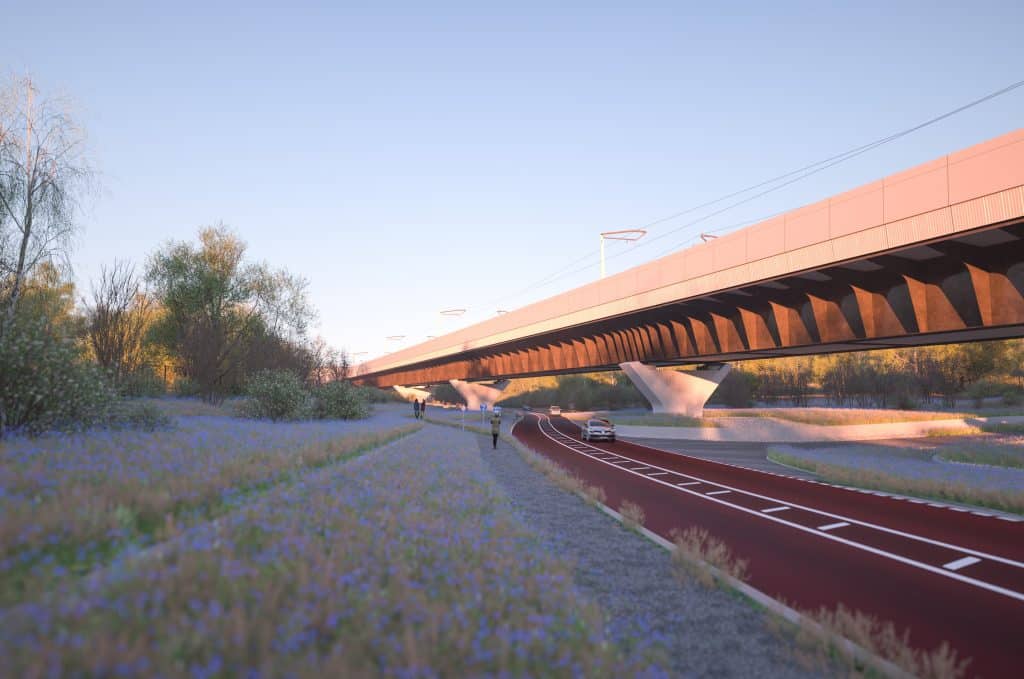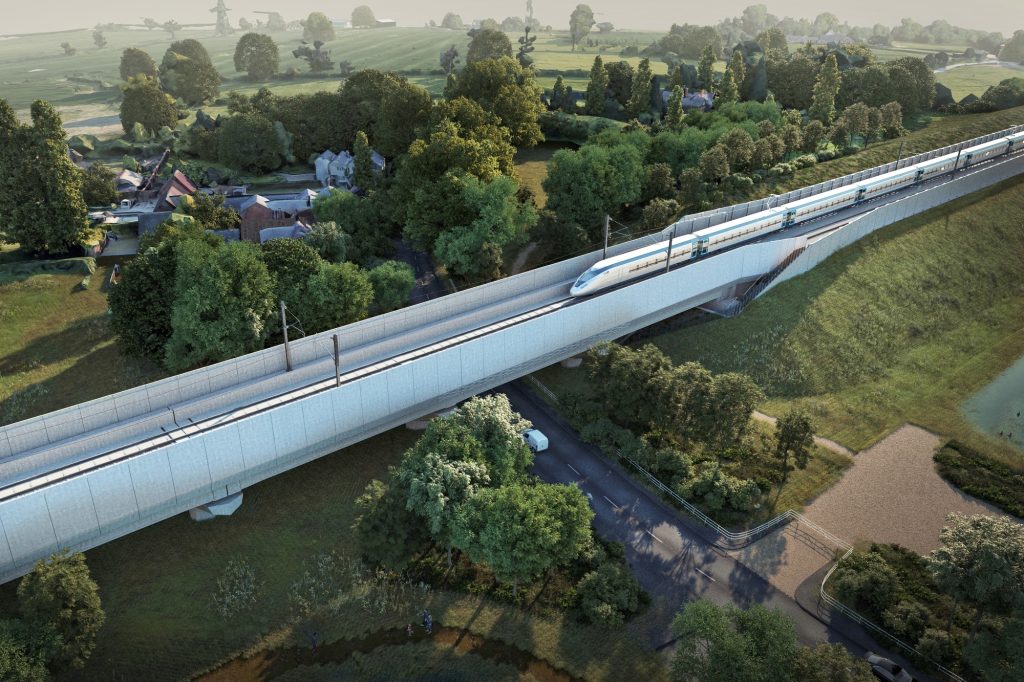Green light for design of HS2’s Wendover viaduct that ‘echoes the great railway bridges of the Victorian age’

This post was originally published on this site

Buckinghamshire Council has given planning approval for High Speed 2’s (HS2’s) Small Dean Viaduct that will carry train services over the A413 and local rail services near Wendover.
The viaduct was designed by HS2 Ltd’s main works contractor, EKFB – a team made up of Eiffage, Kier, Ferrovial Construction and Bam Nuttall – working with their design partner, ASC, which is a joint venture between Arcadis Setec and Cowi, and specialist architects Moxon.
EKFB interface and stakeholder director Simon Matthews said: “Small Dean Viaduct is the most high profile of the 15 viaducts that we are delivering across our 80km central section of HS2 and we have been developing our design to respond to the unique challenges of building a sustainable structure that responds to the local environment. Using the guidance in the Chilterns AONB Detailed Design Principles and working collaboratively with local stakeholders, we are very pleased to receive planning approval for this iconic structure and the surrounding features.
“Works are already underway to prepare for the new viaduct, and over the next two years the foundations and piers will be built alongside the busy A413, before the 5,800t deck will be launched in 2025.”
As well as the main road, the viaduct will also span the neighbouring Chiltern line to London Marylebone and the project will also include the realignment of Small Dean Lane. The A413 will be realigned to pass under the viaduct, with landscaping in the form of a series of subtle terraces to manage the change in height and interplay between road, paths, railway and viaduct.
A shared foot and cycle path will also be delivered by HS2 alongside the main road as it passes under the viaduct between the A413 London Road roundabout and the houses near Rocky Lane. This will eventually form part of the Misbourne Greenway project designed to link Wendover with Great Missenden.
In a statement following the green light for the design, HS2 Ltd said that the design of the 345m long viaduct “echoes the great railway bridges of the Victorian age” with side of the girders that feature prominent deck stiffeners. This element of the design will help to manage the structural forces while allowing for a lighter weight beam, HS2 Ltd has said.
The design is “set low in the landscape” to minimise the impact and features weathering steel, which naturally ages to a characteristically dark russet finish to echo the natural tones of the surrounding landscape.
The structure is one of two places the Chilterns where the HS2 route will be above ground level, with the underside of the viaduct just 6m above the road, supported by five Y-shaped piers.
The pale concrete parapet and noise barrier along the top of the viaduct is designed to throw the dark steel into shadow, helping to give the appearance of a lighter and thinner structure. The piers are designed to be as slender as possible, appearing to reach up and grip the beam above.
Structurally, the viaduct girders will use an innovative “double composite” approach, like the nearby Wendover Dean Viaduct which was also designed by EKFB. This involves two steel girders sandwiched between two layers of reinforced concrete to create a super strong but light weight span – which will dramatically cut the amount of embedded carbon in the structure.
Once complete, the viaduct will carry high speed trains between London and the North. After crossing the viaduct, northbound trains will pass the town of Wendover in a short tunnel designed to reduce the environmental impact of the scheme. Most of the elements of the tunnel’s south portal and associated noise barriers were also given planning approval this week under Schedule 17 of the HS2 Act.
Welcoming the approval, HS2 Ltd design director Kay Hughes said:
“By providing a cleaner, greener way to travel, HS2 will help cut the number of cars and lorries on our roads, cut demand for domestic flights, and help the fight against climate change.
“But it’s also vital that we cut carbon during construction, and the innovative approach to Wendover’s Small Dean Viaduct is a great example of how HS2 can deliver elegant viaducts at a fraction of the normal carbon footprint and save construction time. I’d like to congratulate the design team and look forward to seeing this outstanding viaduct start to take shape over the coming years.”
Like what you’ve read? To receive New Civil Engineer’s daily and weekly newsletters click here.





Responses